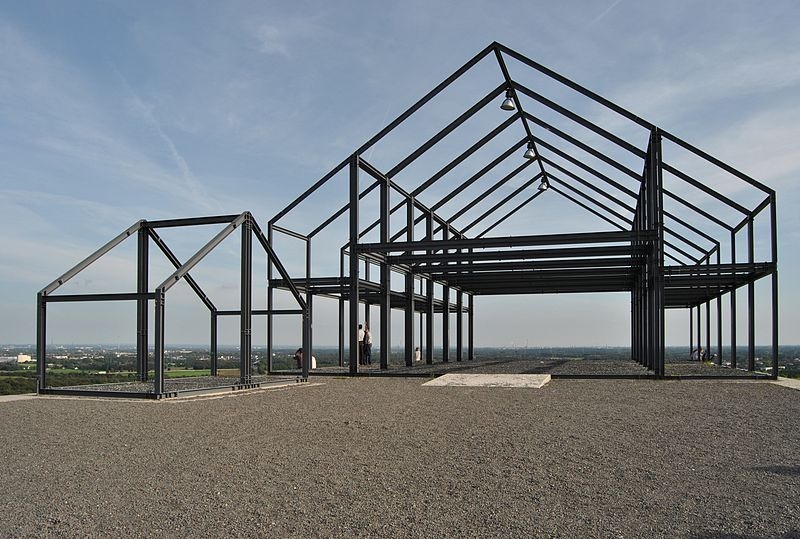The Ruhr region in North Rhine-Westphalia, is naturally flat but dotted with hundreds of small man-made hills. These impressive elevations are called ‘halde’ in German, or pit heaps — the byproducts of nearly 170 years of coal mining in the region.
The Ruhr region is a heavily industrialized area of western Germany that was formed during the 19th and 20th century by the coal and steel industries. Ruhr’s coal mines were in great demand during the industrial age and it enabled the region to grow exponentially. At one time there were almost 300 coal mines in operation in the Ruhr area which employed thousands of workers who worked deep underground, extracting black coal from narrow seams to fuel the industries above.
The amphitheater of Halde Haniel in Bottrop is built on top of a pit heap. Photo credit
Coal was the wealth of the region, but not anymore. Cheaper alternatives, high labor cost, as well as gradual exhaustion of raw materials caused the coal and steel industries to shut down during the middle of the last century. The soot which had once blackened the region disappeared, and dirty heavy industries gave way to clean ones. All that remained were abandoned factories and mine shafts, and more than a hundred landfills of slag, debris and rubble. The halden have mostly been reclaimed by nature, and today are ideal vantage points, recreational areas and green oases in the middle of the densely populated Ruhr district. A number of them are home to artistic landmarks.
Some of the most interesting halden in the Ruhr are:
Halde Haniel
The Halde Haniel in Bottrop was transformed into a full-circle, 800-seat amphitheater that regularly holds various cultural and theatrical events. The amphitheater is accompanied by an art installation called “Totems” that consist of more than a hundred railway sleepers vertically erected on the ground. Halde Haniel is now a popular tourist destination.
Heinrich-Hildebrand-Height
At the summit of the waste heap Heinrich-Hildebrand-Height in Anger park, in the south of Duisburg, is an unusual installation in the form of a walkable roller-coaster titled Tiger & Turtle. The steel structure is 45 meters high and consist of 249 step some of which make a complete 360-degree loop.
Halde Beckstrasse
A 60-meters high tetrahedron protrudes from the halde in Beckstraße. It was created in 1995 as part of the IBA Emscher Park and has since been a model for many landmarks on the halden of the Ruhr Metropolis.
Halde Hoheward
The 152 meter high waste pile at Hoheward is made up of 180 million tons of rock mountains. At the top is a plateau where is a simple observatory consisting of a gigantic sundial and two precisely aligned metal arches that represent the local Meridian and the celestial equator. With the help of markings on the observatory, one can observe the rising and setting of the sun on important calendar days such as summer solstice and winter solstice.
Halde Norddeutschland
This 102 meter high pit heap is home to the two landmarks — Hall house and Stairway to heaven. The “Hall house” is a skeletal house in the form of a steel frame while the “Stairway to heaven” is a staircase that rises to a height of 52 meters. Halde Norddeutschland is also a popular spot for paragliding.

Halde Rheinpreußen
The Halde Rheinpreußen is one of the most important "landmarks of the industrial culture" in the Ruhr area. On the top is "The Geleucht" – an oversized miner's lamp that glows impressively at night.
Halde Rheinelbe
At Halde Rheinelbe is another sculpture called “Stairway to Heaven” and consist of stacked concrete blocks that rises 10 meters high.
Halde Rungenberg
At Halde Rungenberg are two peaks. At the summit of both are installed two spot lights housed in rusted steel tubes. At night, the lights are turned on and directed towards the sky creating a pyramid shaped light structure.
Sources: The Atlantic Times / Wikipedia / Ruhr Tourism


































Comments
Post a Comment